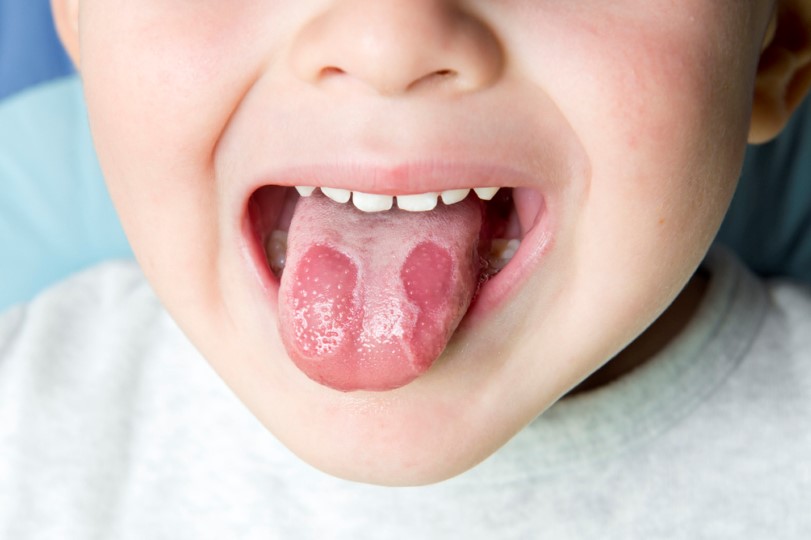
Viral stomatitis: what to do?
Stomatitis is a disease of the oral mucosa of an inflammatory nature and, in some cases, also of a dystrophic nature, i.e. an alteration of the normal appearance of the mucosa
Remember that the oral mucosa includes the gums, cheeks, palate, inner face of the lips and tongue.
A distinction must first be made between stomatitis due to local factors and stomatitis as a local manifestation of a general disease
The latter can be infectious (typhus, chickenpox, measles, scarlet fever, diphtheria), hormonal (menstrual state, pregnancy), deficiency (hypovitaminosis) or dysmetabolic (diabetes, dyspeptic states, uremia).
What are the causes of stomatitis?
Local causes of stomatitis can be the most varied: mechanical, thermal, chemical, poor oral hygiene.
Stomatitis can also occur as a complication of the difficult eruption of a wisdom tooth, a lesion which, however, characterises the side where the tooth is located.
Today, the role of stress is also recognised as a contributory cause for the development of aphthous stomatitis, through a decrease in local immunity.
Symptomatology of stomatitis
Typical symptoms of stomatitis are fetid breath, sialorrhoea (increased saliva secretion), bleeding gums, fever, enlarged lymph nodes and spontaneous pain that is accentuated by chewing.
Often, one or more ulcerated areas (aphthae) or particularly reddened areas of the mucosa appear on the mucosa, which can be clearly distinguished from the surrounding healthy mucosa (e.g. in stomatitis under dentures – denture stomatitis).
It should be noted that the oral mucosa and tongue play a particular role in the diagnosis of certain infectious and exanthematous diseases.
These, in fact, almost always manifest themselves first in the mouth.
Development of the disease
Stomatitis almost always arises from the gingival margin as gingivitis, later extending to the gingival mucosa and cheek.
In aphthous stomatitis there is the appearance of ulcers directly at the site of onset, especially the inner face of the lips and cheeks.
The evolution of the symptomatological picture usually does not exceed 7-8 days.
In any case, all concomitant causes must be eliminated, such as poor oral hygiene, faulty nutrition and, in subjects wearing prostheses, any sharp edges.
In stomatitis due to metal intoxication (e.g. mercury and lead), it will also be necessary to eliminate the source of intoxication.
Problems associated with stomatitis
There are forms of stomatitis with particularly severe evolution.
The diagnosis of these afflictions is the responsibility of the dental specialist.
Untreated stomatitis or stomatitis treated with incorrect therapy (e.g. through the unconditional use of antibiotics) can create a mycotic (fungal) infection with the appearance of a whitish creamy patina adhering to the mucous membrane.
What to do in case of stomatitis
Apply corticosteroids locally to the painful lesions; their action is effective in reducing the duration of ulcers and symptoms, ultimately facilitating the healing process.
The use of an antiseptic mouthwash, in the form of a 0.2% aqueous chlorhexidine solution, is also indicated.
It goes without saying that in stomatitis that recognises a clear deficiency origin, as in the case of hypovitaminosis, an appropriate supportive vitamin therapy must be associated.
How it is prevented
One of the predisposing factors is a defective diet and, as a consequence, a vitamin deficiency.
These, in fact, play a very important role in the formation of antibodies and the possibility of superinfections (e.g. fungal infections).
For this reason, it is good to eat a balanced diet with the right amount of fruit and vegetables.
Poor oral hygiene is also an unfavourable factor.
Therefore, it is advisable to consult your dentist to keep your oral hygiene under control at all times.
Read Also:
Emergency Live Even More…Live: Download The New Free App Of Your Newspaper For IOS And Android
Plaques In The Throat: How To Recognise Them
Lymphoma: 10 Alarm Bells Not To Be Underestimated
Non-Hodgkin’s Lymphoma: Symptoms, Diagnosis And Treatment Of A Heterogeneous Group Of Tumours
Lymphadenomegaly: What To Do In Case Of Enlarged Lymph Nodes
Sore Throat: How To Diagnose Strep Throat?
Sore Throat: When Is It Caused By Streptococcus?
Pharyngotonsillitis: Symptoms And Diagnosis
Tonsillitis: Symptoms, Diagnosis And Treatment


